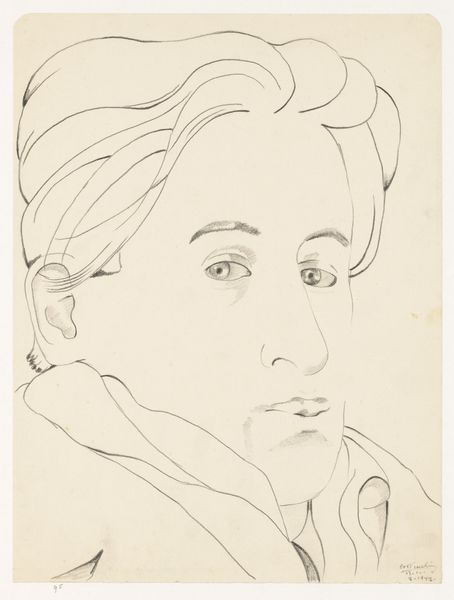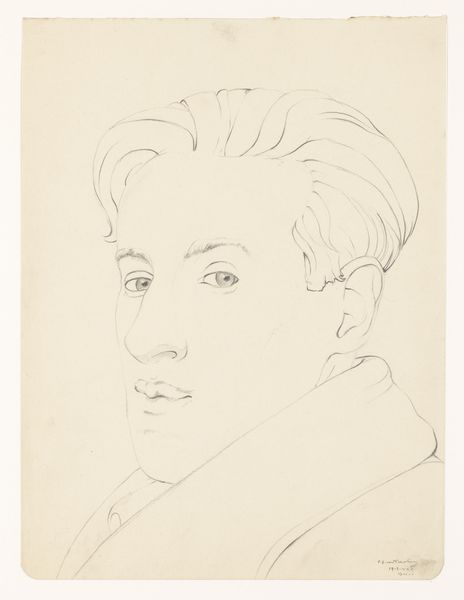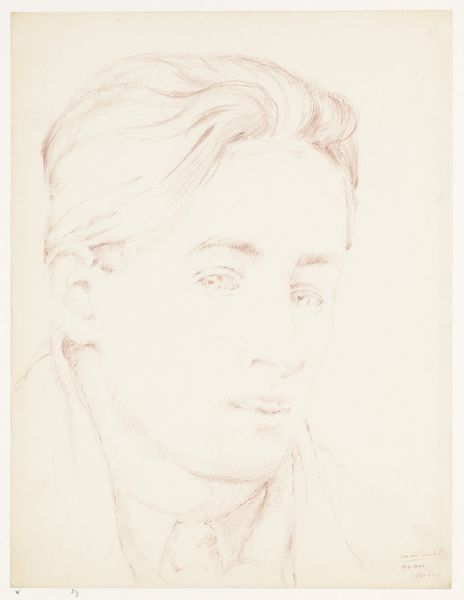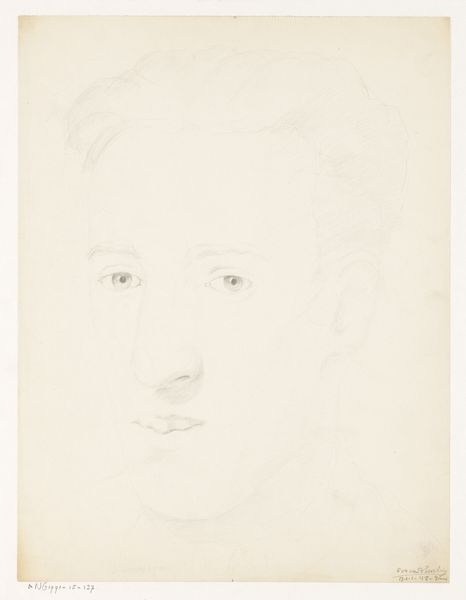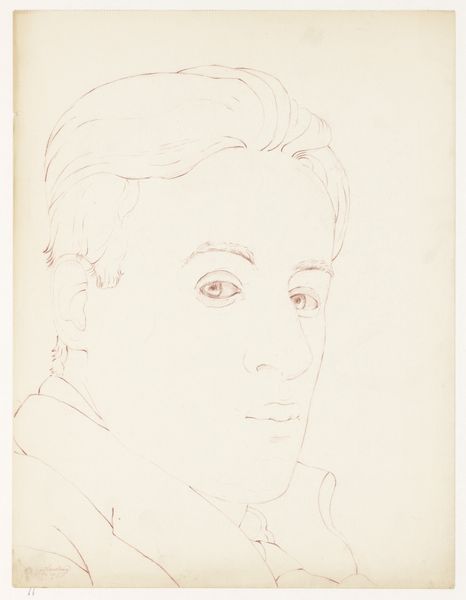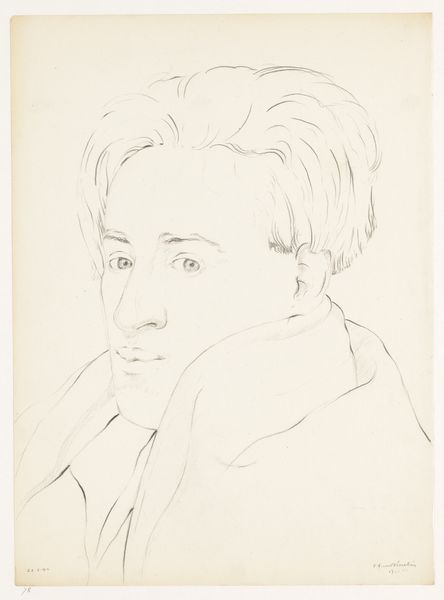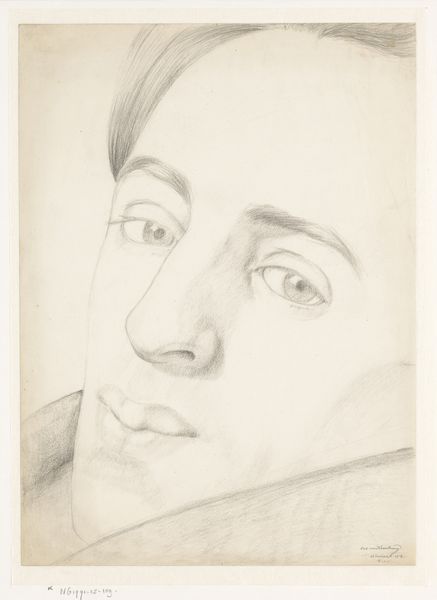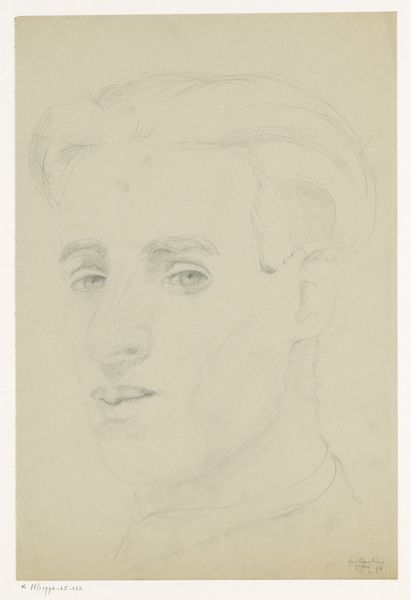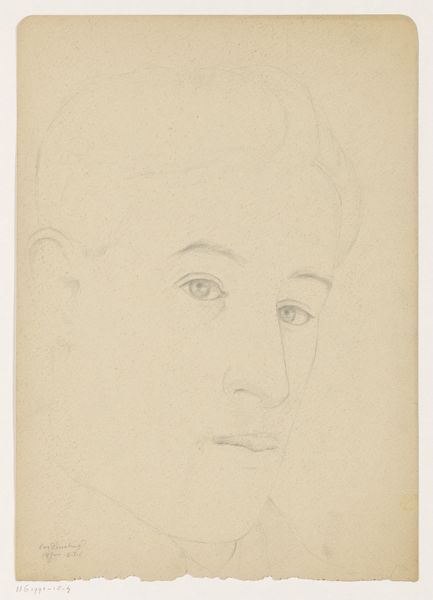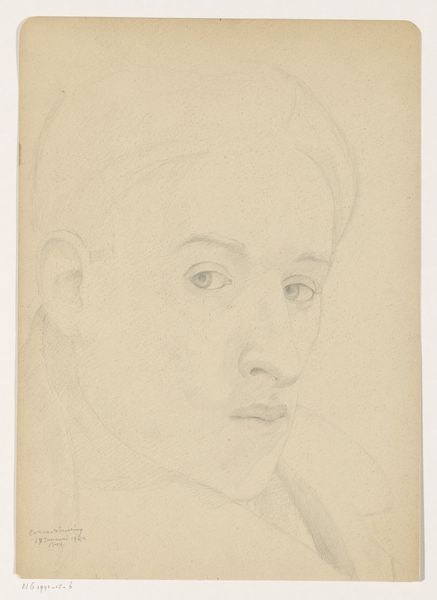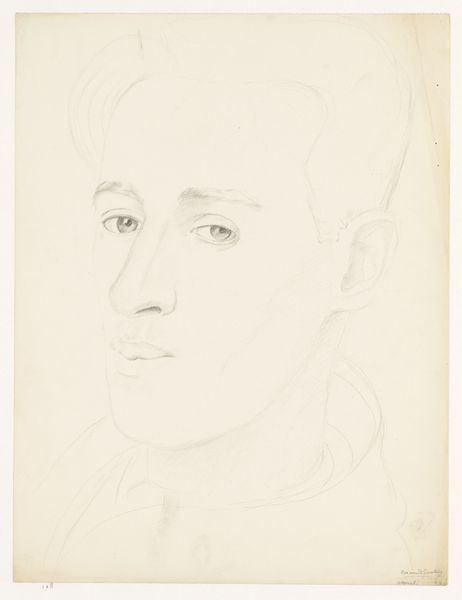
drawing, pencil
#
portrait
#
drawing
#
self-portrait
#
pencil drawing
#
pencil
#
portrait drawing
#
realism
Dimensions: height 35.0 cm, width 27.0 cm
Copyright: Rijks Museum: Open Domain
Curator: Welcome. We are looking at Cor van Teeseling’s “Self-portrait: B-1-1, 12 februari," which historians estimate he completed around 1942. It is a pencil drawing currently held here at the Rijksmuseum. Editor: The softness of the pencil immediately struck me. It's a delicate image. The lines are faint, almost hesitant. He’s resting his face in his hand; it exudes contemplation, or perhaps weariness? Curator: It’s interesting to consider this work within its socio-political context. Van Teeseling was part of the Dutch artistic resistance during the Second World War. How do you feel that knowledge informs the work? Editor: Massively. That sense of weariness I initially picked up takes on a much heavier meaning. The fragility of the lines, the way he obscures part of his face… It now speaks to me of vulnerability, of the precarity of life under occupation. There’s a sense of wanting to disappear, to become invisible. Curator: Exactly. Artists in occupied countries faced profound ethical dilemmas. What role should art play in the face of such brutal realities? Van Teeseling and his peers risked everything by choosing to continue creating, documenting, and subtly subverting the Nazi regime's propaganda. Editor: And the choice of a self-portrait, at such a time, speaks volumes. It becomes an act of asserting one's identity, of claiming agency in a world determined to strip it away. This isn't just a likeness; it's a testament to survival, resistance, and the enduring power of the individual spirit against oppression. The “B-1-1, 12 februari” portion of the title almost feels like a coded diary entry. Curator: It does. I appreciate you making that connection to diary entries. Pencil sketches like this often served a dual purpose: a form of personal expression and a coded act of defiance. Editor: Thinking about art's role then, I wonder what this drawing asks of us now. Are we looking closely enough? Are we truly seeing those made vulnerable by oppressive structures today? Curator: It encourages a re-evaluation of art as both a product of and a force against larger systems of control. Thanks for your perspectives. Editor: Thank you. It’s powerful to be reminded of the quiet, persistent ways art can resist and endure.
Comments
No comments
Be the first to comment and join the conversation on the ultimate creative platform.
